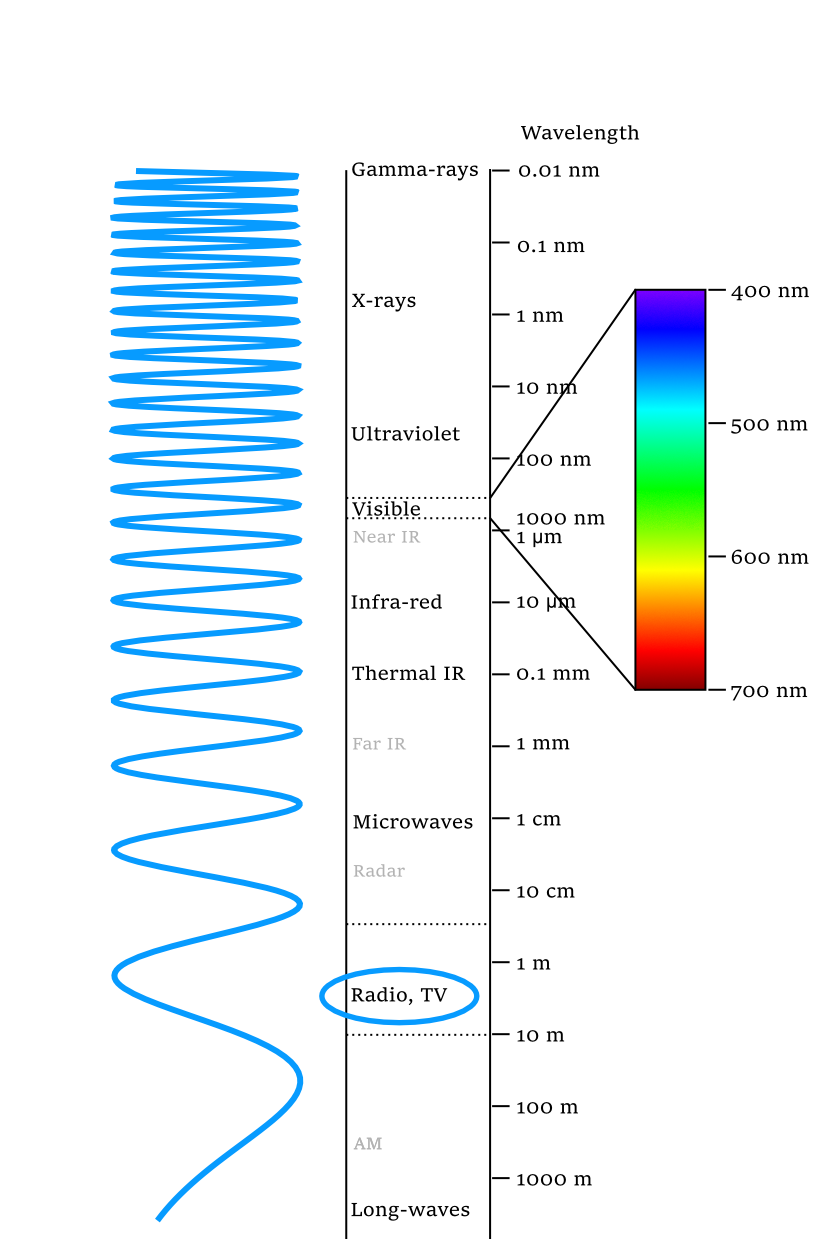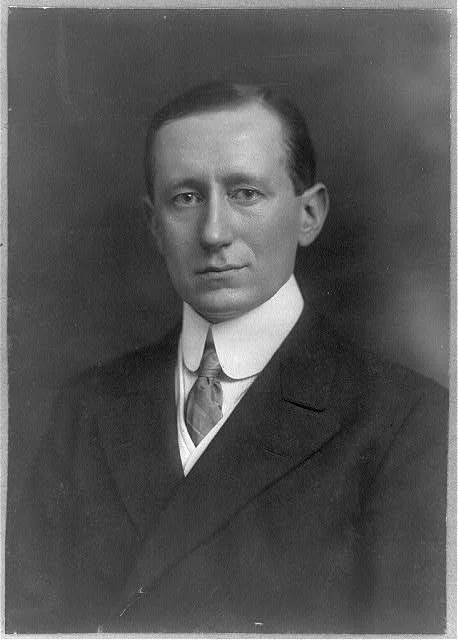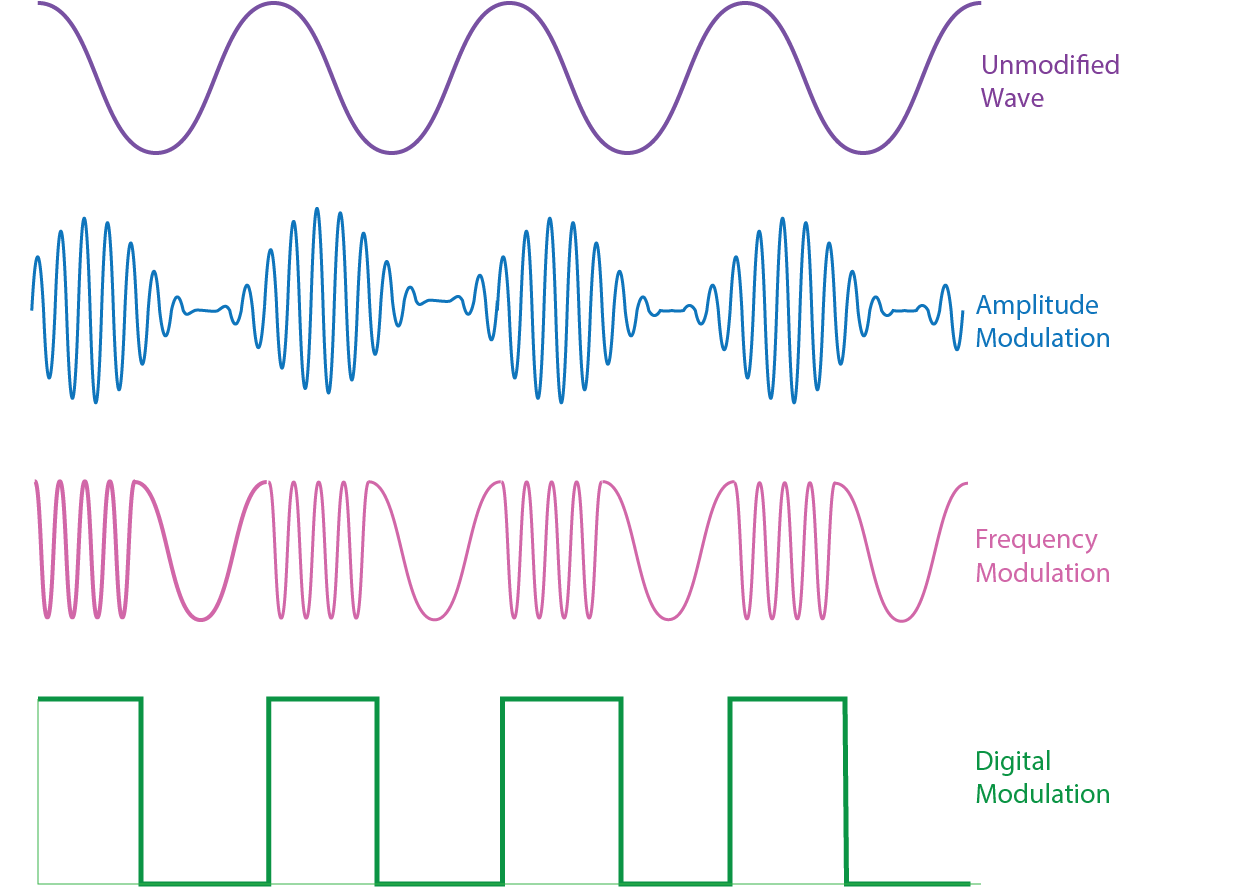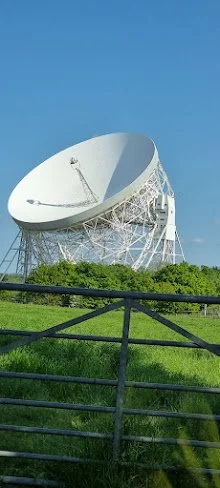Gugli
This is Gugli, he’s part of the Stockport frog trail for Summer 2023. He represents radio.
Gugli is the chief radio astronomer on planet Croakasaur. He uses radio telescopes to look at the radio waves coming from space. He is about to pick up a faint signal coming from a far-off blueish planet that we call Earth. What will he make of us?
Gugli is shown looking up at his radio telescopes on the planet surface, they are dishes like the ones we have on Earth, although they seem to have a simpler structure. Perhaps his planet has lower gravity so the dishes weigh less than they would on Earth. The skies are full of stars and planets that are radiating radio waves that he is picking up.
He is holding a wireless communications device which uses radio signals to connect to a network and radio controlled remote to direct the telescopes. On his back, is his cloak of office which represents the different ways in which radio signals can be modified.
Edited file merging Inductiveload EM Spectrum Properties edit - Electromagnetic spectrum - Wikipedia and Penubag at Electromagnetic-Spectrum - Electromagnetic spectrum - Wikipedia . Made available under cc3 licence.
What are radio waves?
You have probably seen a wave at the seaside or on a lake on a windy day. The sea stays in the same place but there is movement of the water which forms a shape which moves. Waves can also happen in other materials, like the air or space which has been electrically charged. Even though it is not obvious to the naked eye, visible light also moves in waves. When the waves are squashed together the colour appears to be more blue or purple, waves in the middle of the visible spectrum are green and waves that are more stretched out look red. If the waves are stretched out even further our eyes cannot see them anymore, but it is possible to detect that the waves are there using tools that you will be very familiar with.
Radio waves are like light waves that are stretched out so much that they are about a million times longer than light waves. Your radio and TV get their broadcasts in the form of radio waves. Your mobile phone also receives and sends radio waves to connect to the phone network.
Who was Guglielmo Marconi?
Guglielmo Marconi, worked out that it was possible to send telegraph messages wirelessly using radio waves in the last decade of the nineteenth century. He created the equipment needed to send a message using an antenna and receive the message using a receiver and won a Nobel Prize for his work. His company installed wireless telegraphy equipment internationally, including in ships. It is likely that the only people who survived the sinking of the Titanic in 1912 did so because of emergency signals sent using his equipment.
Marconi is widely accepted to be a very important figure in the development of communications. However, like most inventions, he was not the only person working in the area at the time. His politics has been subject to criticism. He was a long time supporter of the Italian fascist movement and it is claimed that he discriminated against Jews while he was in charge of the Academy of Italy.
Marconi from Library of Congress accessed via Guglielmo Marconi (loc.gov) 15/7/23 no known restrictions on reproduction
own image
How do we modify radio waves to carry information?
Information can be carried in a radio wave by modifying the wave in three different ways, starting with a basic wave.
We can make the waves taller or shorter. This is similar to making light brighter or dimmer, or making noise louder or quieter. The technical name for this is amplitude modulation, and this is what the letters AM mean on a radio.
We can make the waves more squashed or more spread out. This is similar to changing the colour of light or making a note higher or lower. The technical name for this is frequency modulation and this is what is mean by the letters FM on a radio.
A signal can also be used to represent just two states, on or off – which allows data to be sent in a digital format.
Radio receivers decode the information sent on the radio wave allowing us to pick up messages, hear music and more.
How is radio used by astronomers?
We can see the visible waves from stars in the night sky as dots of light. However, objects in space can also generate radio waves which are not visible, but which can be ‘seen’ by a radio telescope which can detect things that standard telescopes cannot.
In Stockport we are very lucky to live near one of the largest radio telescopes in the world. It is called the Lovell telescope after it’s creator Bernard Lovell. You can find it at Jodrell Bank in Cheshire where you will also find some fantastic exhibitions, talks and a planetarium. Jodrell Bank scientists, who are part of the University of Manchester, use the information they collect with their radio telescopes to understand space better like the beginnings of the universe, pulsar stars that flash radiation like very precise lighthouses and planets outside our solar system.
own image - The Lovell telescope from the approach to Jodrell Bank, Cheshire
Can radio waves be used to detect intelligent life on other planets?
The Search for Extra-Terrestrial Intelligence (known as SETI) is a project to look for unexplained patterns in radio waves detected from space. SETI scientists argue that if an alien species had technology like ours they might be able to send out radio signals which carry information just as we do. If we found such a signal, then this might be our first evidence that we are not alone in the universe. To date, no such signal has been found, but the search continues.
Could intelligent aliens detect a radio signal from us?
Just as it is theoretically possible that on Earth we detect radio signals from other planets, it is possible to imagine that extra-terrestrials on other planets could detect radio signals from us. There are however some reasons why this is possible rather than highly probable.
The first issue is that we do not yet have evidence that there are any intelligent extra-terrestrials nearby to hear our signals. We know now that there thousands planets out there, but not all of them are suitable for supporting life, let alone intelligent life. The nearest planet capable of supporting any life is so far away that it would take twenty years for a radio signal from Earth to reach it.
Second, the radio signals that we generate normally are not designed to reach deep space. AM signals we create are unable to leave our atmosphere and just bounce back. FM signals can reach space, but they are still designed to be spread out not targeted, so by the time they are light years away they will be very weak.
If an alien species did start listening to our radio broadcasts what would they make of us?
In a 1985 fiction book called ‘Contact’, Carl Sagan (who was also a real astronomer) imagined that extra terrestrials picked up a broadcast of the opening of the Berlin Olympics and that their first impression of Earth was that of seeing Hitler in 1936.
The 1999 comedy film ‘Galaxy Quest’ imagined a situation where extra terrestrials pick up our TV programmes, but they confused our entertainment shows for reality as their planet had no concept of fiction.
What TV or radio programmes do you enjoy? What do you think an extra-terrestrial would think if they came across those programmes? Would they understand them as you do?
What about if it took 20, 50 or more years for a signal to reach them? Do you think that the radio or TV twenty, fifty or more years ago would give a good impression of who we are now?
How can I find out more about radio and radio astronomy?
For an account of Marconi telegraphy equipment and how it helped save survivors of the Titanic see an article from The Science Museum Titanic, Marconi and the wireless telegraph | Science Museum
BBC Bitesize has some useful GCSE science pages that revise waves including the electro magnetic spectrum that includes light and radio waves. See Radio waves, microwaves, infrared and visible light - Transverse and longitudinal waves - AQA - GCSE Physics (Single Science) Revision - AQA - BBC Bitesize
The Jodrell Bank Discovery Centre is an amazing place to visit, you can get close to the giant Lovell telescope, see talks, view displays go to a Planetarium and more. Their website is Homepage - Jodrell Bank
The SETI institute has a website at SETI Institute
For lots of detailed discussion about the search for habitable planets NASA has some great resources. See NASA NASA has been collecting information to help astronomers detect planets outside the solar system with using telescopes that pick up on a different set of waves – try looking at discoveries from the Kepler telescope, Tess mission and now the James Webb telescope.
Some family-friendly books which touch on this subject:
“Is there anybody out there?” by Dara Briain (Scholastic Children’s Books, 2020) is fun but full discussion of whether extra terrestrial life is possible, and whether we would be able to communicate with aliens if we found them.
The DK Knowledge Encyclopedia of Space is designed for kids and has some discussion of telescopes and SETI. It’s also not a bad starting point if you’re a ‘big kid’ without much background!
Usborne Physics for Beginners by Rachel Firth, Minna Lacey and Darren Stobbart (Usborne, 2022) contains a good chapter on waves, which includes a section on waves.
Charming Badger, July 2023.
About Charming Badger
Charming Badger is a Stockport based artist who primarily draws on the natural world and B-movies especially science fiction which inspires illustrations in the ‘It Came from Stockport” series. They enjoy learning about the world around us as much as they enjoy making up nonsense.
instagram: @charmingbadger
web: www.charmingbadger.com
About the Stockport Frogtastic Frog Trail
The 2023 Frogtastic frog trail is the third time that a trail of giant frogs have appeared in Stockport. Each frog is designed and painted by an artist and the trail brings in visitors to the town and generates money for charities. The trail is organised by Totally Stockport you can find more details and a map on their website. The trail opened on 21st July and runs until the end of September.







